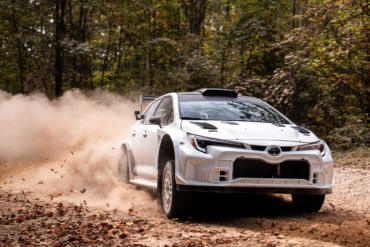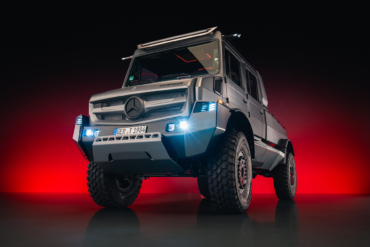The 2023 Acura Integra brings back the original hot-hatch in the hopes of returning enthusiasm for the brand. Is there anything to smile about?
After hibernating for 22 years, the Integra name returns to Acura. And its reawakening is much like its origin, starting rather humbly, slightly modified from the Honda Civic sedan platform. The big question remains whether the 2023 Integra will take root and become an iconic name for a generation of enthusiasts, just as it did in the ’80s and ’90s.
Acura built the last Integra in 2001, ending a 15-year run of the iconic hot-hatch from Honda’s North American premium brand. By the time it left, we saw three generations of both three-door and five-door versions. Acura also built GS-R models with extra horsepower from rev-happy V-TEC four-cylinder engines.
We even got a turned-to-11 Type R version: A 195-horsepower, three-door bottle rocket with athletic moves, a limited-slip differential, a screaming four-cylinder engine, and a massive rear wing for added flair.

But that’s not how the Integra started. It began as a slightly modified Civic hatchback with a different body. A Civic with a touch more panache. This makes the relaunch of the Integra name quite fitting. Twenty-two years on, Acura dusted off the original recipe book, chose the same ingredients, and followed the instructions closely.
What we have here is, essentially, a Civic Si as a hatchback. Just as before, the Integra body is wholly different and instantly distinctive from the Civic, but the chassis and powertrain underneath are largely the same.
Critically, though, the Integra brings a few of its own tricks and different tuning. As a result, it has a distinctive driving feel and personality.
2023 Acura Integra Review: Good Bones

To start, the 11th-generation Honda Civic platform is fantastic. Stiff, strong, and relatively large. In fact, Honda claims its torsional rigidity is 8% higher and bending 13% higher than the 10th-generation platform.
Reduced flex in the chassis allows higher spring rates while maintaining similar ride quality — good for folks looking to enjoy some twisty road shenanigans.

Acura took that and added an aluminum front subframe, hood, and front bumper beam, to lighten the load on the front end. Furthermore, Acura staggered the front and rear axles, the rear track stretching more than an inch wider than the front. This gives the Integra inherent stability in the chassis, which, in turn, allows more aggressive tuning of the suspension.
Speaking of which, that is one of the critical differences between the Civic, if you choose the A-Spec Integra with the technology package, Acura installs adaptive shock absorbers. This allows the different drive modes to change the feel of the Integra. Yes, of course, there are drive modes: Comfort, Normal, Sport, and Individual.
Source of the Scoot

Under that aluminum hood lies a turbocharged 1.5L four-cylinder engine cranking out 200 horsepower and 192 pound-feet of torque. Or the exact same as the 2022 Honda Civic Si. This, I admit, is slightly disappointing. The Integra, after all, is Civic plus a little, and this is just Civic.
Then again, it isn’t “just Civic,” but Civic Si. It is 200 horsepower; a healthy number for quick motoring in a small car. Moreover, the 192 pound-feet of torque peak comes at just 1,800 rpm and holds there until you surpass 5,000 rpm.
This 1.5L engine delivers healthy and hearty mid-range muscle to dart out of a corner, screech yourself around an interstate on-ramp, or generally misbehave. Still, I’d rather have more power than the Civic Si, even a marginal increase for barstool bragging rights.
On the plus side, Acura does offer a six-speed manual transmission to play with, adding a critical connection between you and the car. And, if you get the manual, you also get a helical-type limited-slip differential to properly distribute power across the front axle — a must for those with sporty intentions.
For those not into clutch pedals, you can instead choose the continuously variable transmission. In fact, technically speaking, the manual is optional and the CVT standard — but there is no price difference between them.
A Look Inside the 2023 Integra

The premium side of Acura’s interior comes to light. On the top-trimmed A-spec with tech package Integra, you get a 9-inch center console touchscreen with wireless smartphone connectivity (Apple CarPlay, Android Auto, Bluetooth), as well as wireless phone charging. You get a 5.3-inch head-up display, too.

For your backside, there are microsuede inserts on the seats. And all Integras have a 10.2-inch digital instrument cluster and heated seats up front.

More importantly, to me at least, the seats have deep bolsters to hold you snugly in place, good placement to easily reach switchgear, and an expansive view out of the windshield.

I also quite like the 24 cubic feet of space behind the second row that the hatchback offers. That’s 10 more than the Civic Si’s trunk. Furthermore, the second-row seats easily fold for plenty of extra space.

Eager to Play
Facts, figures, specs, and dimensions mean nothing if not used together well. And, at first glance, it saddened me to see this Integra, despite the use of aluminum in front, weighs 120 pounds more than the Civic Si. And weight is the enemy of all car enthusiast things!
But here comes a big sigh of relief — despite the weight penalty, I enjoyed driving the 2023 Acura Integra. A lot.
Acura built a lithe, responsive, athletic machine eager to play. Quite similar in spirit to the beloved third-generation Integra that left us a generation ago. With just 2.2 turns lock-to-lock, you control a fast steering rack. Thankfully, the front end keeps up, giving you a car that will leap toward the apex of a corner.
Part of the magic comes through the tires — or lack of tires — which are performance all-season hunks of rubber wrapped around 18-inch alloy wheels. There’s not much grip.
That means two things: First, finding the limit around of corner is quite easy because it’s not that high. Second, and critically, you go beyond the limit with zero drama. It’s easy to regain composure and carry on. After all, as they say, driving a slow car fast is way more fun than the alternative. “They” are so smart.
Driving fun — the Integra generously supplies it. Making tires scream as you barrel into a corner, clipping the apex just so, and laying on power heavily and early as you exit a corner with the help of the limited-slip differential.
You feel a good pull as you hustle down the straight towards the next bend. Moving your right hand down to the light and low-friction shifter, ready to clip off another gear and ride into the sunset.

Type S? Almost Certainly!
Start with Civic and turn it up from there. In the early ‘90s, Acura called it GS-R. Now, I wholly expect a Type-S version of the Integra coming soon.
And since engineers are roaming around the Civic parts bin anyway, why not take a close look at the Civic Type R’s 2.0L turbo? It made 306 horsepower 5 years ago. Who knows what Acura could squeeze out of it now?
If it’s anything like the TLX or MDX Type S, the whole chassis will get a thorough once-over and deliver a gangbuster Integra. But, at this moment, I can only speculate.
2023 Acura Integra: Something to Smile About

To get behind the wheel of a 2023 Acura Integra, you need at least $31,895 MSRP. If you want 18-inch instead of 17-inch wheels, and a lip spoiler to spice up the look, that’s another $2,000 or $33,895 MSRP for an A-Spec.
Assuming the money is there, proper car nerds will want the oft-mentioned A-Spec with Technology package. It costs $36,895 MSRP, but you gain the option for a manual, the limited-slip diff, the adjustable shocks, and the closest connection to your childhood memories of the original.
Cars — all cars — have changed significantly in the last 22 years. And the Integra certainly isn’t immune to all the computers, electronics, and driving aids that envelope our autos today.
What hasn’t changed is the intention of this lovely sport compact car. For the Integra’s second opening act, Acura executed those intentions well. Enough so to be optimistic about future versions and excited for the next 15 years.








